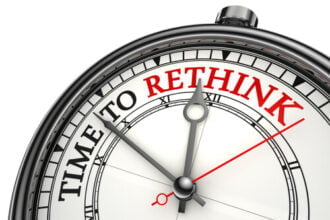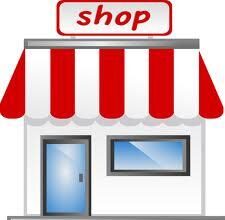Recently, the McKinsey Quarterly published a brief article titled “A marketer’s guide to behavioral economics“. The author recommends four strategies for marketers, all inspired by research in behavioral economics.
Behavioral economics is, of course, a large and established field of academic research, complete with a Nobel Laureate (Daniel Kahneman). The academic work has been popularized in a number of books (examples: Nudge, The Winner’s Curse) over the past decade.
In my previous work at ProfitLogic/Oracle as well as my current consulting work with retailers, I have been on the lookout for opportunities to help my clients exploit these findings. Sadly, I have not come up with anything that isn’t already well-known or already being applied.
Against this backdrop, I was curious if the McKinsey article had new insights to offer; something that I could make Monday Morning useful for retailers.
Let’s take a look at the four recommendations from McKinsey.
1. Make a product’s cost less painful…
Recently, the McKinsey Quarterly published a brief article titled “A marketer’s guide to behavioral economics“. The author recommends four strategies for marketers, all inspired by research in behavioral economics.
Behavioral economics is, of course, a large and established field of academic research, complete with a Nobel Laureate (Daniel Kahneman). The academic work has been popularized in a number of books (examples: Nudge, The Winner’s Curse) over the past decade.
In my previous work at ProfitLogic/Oracle as well as my current consulting work with retailers, I have been on the lookout for opportunities to help my clients exploit these findings. Sadly, I have not come up with anything that isn’t already well-known or already being applied.
Against this backdrop, I was curious if the McKinsey article had new insights to offer; something that I could make Monday Morning useful for retailers.
Let’s take a look at the four recommendations from McKinsey.
1. Make a product’s cost less painful
In almost every purchasing decision, consumers have the option to do nothing: they can always save their money for another day. That’s why the marketer’s task is not just to beat competitors but also to persuade shoppers to part with their money in the first place.
Retailers know that allowing consumers to delay payment can dramatically increase their willingness to buy.
Even small delays in payment can soften the immediate sting of parting with your money and remove an important barrier to purchase.
Useful, yes. Novel, no. This is well-known to retailers as indicated by layaway plans, “no payments for 6 months” etc.
2. Harness the power of a default option
The evidence is overwhelming that presenting one option as a default increases the chance it will be chosen. Defaults—what you get if you don’t actively make a choice—work partly by instilling a perception of ownership before any purchase takes place, because the pleasure we derive from gains is less intense than the pain from equivalent losses.
An Italian telecom company, for example, increased the acceptance rate of an offer made to customers when they called to cancel their service. Originally, a script informed them that they would receive 100 free calls if they kept their plan. The script was reworded to say, “We have already credited your account with 100 calls—how could you use those?” Many customers did not want to give up free talk time they felt they already owned.
This is interesting and useful for some industries but I couldn’t think of a way for a retailer to act on it. If you have any ideas, do let me know.
3. Don’t overwhelm consumers with choice
When a default option isn’t possible, marketers must be wary of generating “choice overload,” which makes consumers less likely to purchase.
Large in-store assortments work against marketers in at least two ways. First, these choices make consumers work harder to find their preferred option, a potential barrier to purchase. Second, large assortments increase the likelihood that each choice will become imbued with a “negative halo”—a heightened awareness that every option requires you to forgo desirable features available in some other product. Reducing the number of options makes people likelier not only to reach a decision but also to feel more satisfied with their choice.
This is well-known and is the so-called “assortment breadth” problem.
Retailers will be the first to agree that
- if you have too few choices, consumers won’t even notice the product
- if you have too many, consumers may turn away from buying the product
- there’s an optimal zone somewhere in the middle
To make it Monday Morning useful, we need to systematically quantify what the optimal number of choices is, for each product category. But this is not easy due to the number of confounding factors.
Seasonal variations in demand, inventory stockouts, store-to-store variations in demand, and the effects of price cuts and promotions all affect consumer behavior and it is very difficult to isolate the effect of just the assortment breadth on demand so that the retailer can act on it.
4. Position your preferred option carefully
Economists assume that everything has a price: your willingness to pay may be higher than mine, but each of us has a maximum price we’d be willing to pay. How marketers position a product, though, can change the equation.
… marketers sometimes benefit from offering a few clearly inferior options. Even if they don’t sell, they may increase sales of slightly better products the store really wants to move.
… many restaurants find that the second-most-expensive bottle of wine is very popular—and so is the second-cheapest. Customers who buy the former feel they are getting something special but not going over the top. Those who buy the latter feel they are getting a bargain but not being cheap. Sony found the same thing with headphones: consumers buy them at a given price if there is a more expensive option—but not if they are the most expensive option on offer.
This is not widely practiced and hence potentially useful. Making it Monday Morning useful doesn’t seem that hard either: when planning a product range, many retailers follow what’s known as a “good-better-best” pricing strategy: an entry-level, affordable item, a moderately-priced, sensible item and a high-quality, expensive item. To this, they can add an item that’s (say) 50% higher in price but only slightly better in quality/features than the current highest-price product.
After reading this section, I searched for academic work on the topic and stumbled on a real gem: a paper titled “The Effect of Product Assortment on Buyer Preferences” by Stanford Professor Itamar Simonson.
I highly recommend the paper if you can get your hands on it (unfortunately, it is behind a paywall). It is fascinating and a really fun read. Prof. Simonson describes numerous neat examples – here’s one:
Williams-Sonoma, a mail-order and retail business located in San Francisco, used to offer one home bread maker priced at $275. Later, a second home bread maker was added, which had similar features except for its larger size. The new item was priced more than 50% higher than the original bread maker. Williams-Sonoma did not sell many units of the new (relatively overpriced) item, but the sales of the less expensive bread maker almost doubled.
Overall, I got something useful from the McKinsey article and the Simonson paper. Next step: run it by my clients and see what they think. I will keep you posted.








